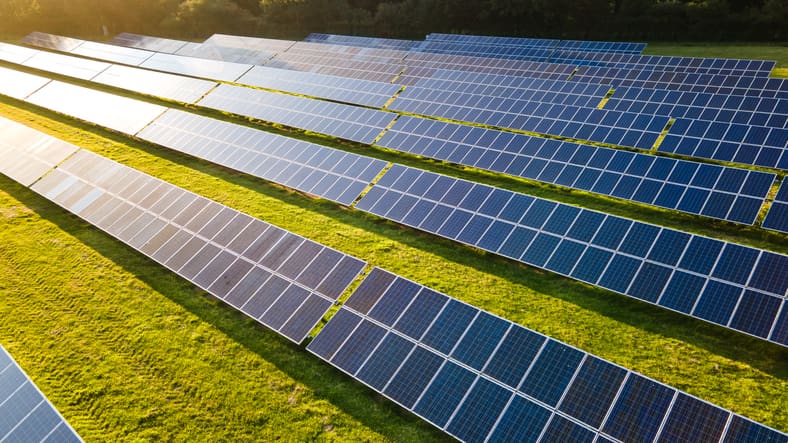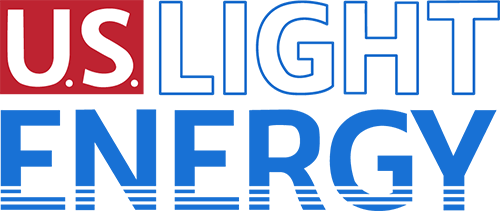
Several states, including New York, are moving away from fossil fuels and embracing the sustainability of solar farms—and with good reason. For end-users, such as homeowners, renters, businesses, and municipalities, solar farms offer subscribers an exceptional opportunity to lower utility bills, decrease dependency on fossil fuels, and utilize clean, renewable solar energy. Landowners who lease land for solar farm development benefit by generating a steady, predictable income for themselves while supporting their community with sustainable energy—and at no cost! From design to installation to implementation, solar professionals can develop solar farms relatively quickly, enabling solar energy subscribers and landowners to enjoy all the benefits of renewable solar energy.
What Does a Solar Farm Timeline Look Like?
Solar farms generally take eight to eighteen months to complete, from planning to implementation. Much of the timeline depends on the size of the solar farm. Large solar farm projects require more resources, such as land, equipment, and power grid capacity. When planning begins, it can take approximately three to six months to find an appropriate piece of land, manage permits, and design the solar farm. Ordering the proper equipment and delivering the necessary materials to the solar farm site could take another month or two. Site preparation and construction, including the connection to three-phase distribution lines, could take about three to four months. Once the solar farm is installed and properly connected, solar developers work with the utility company to ensure the system is properly tested and ready for consumption.
What Affects the Length of Time It Takes to Build a Solar Farm?
A few factors can impact the process.
Finding Proper Land
Each solar farm has its specific power output demands. Finding enough land that fits all the requirements for a solar farm project can be challenging. Also, some parcels of land may require additional consideration, such as meeting local regulations that demand protection for natural habitats on-site.
Construction
Some land may require extra effort to protect solar arrays and maximize their ability to absorb sunlight. For instance, land prone to flooding may need solar panels installed higher than normal off the ground. Also, the removal of vegetation or obstructions can prolong the construction timeline. Like most construction projects, supply chain issues, poor weather, and permit processing timelines can cause a delay.
Utility Interconnection
Connecting a solar farm to a power grid or substation can be challenging. The power lines and substation have to be able to handle the energy output of the solar farm. The power grid and lines may require an extensive overhaul in some cases. Proximity to substation interconnectivity is also very important. The further away the land is from the electrical grid, the more expensive it is to connect the solar farm. Solar develops generally prefer power lines to be within 0.2 miles of a solar farm and power grids or substations to be within two miles.
What Does the Solar Farm Process Look Like?
Solar professionals undertake several important steps, from planning to implementation, when developing a solar farm.
Land Acquisition
Securing the right piece of land is the first crucial step when solar professionals begin developing a solar farm. Solar developers look at several factors to determine the land’s viability for solar production.
Solar Resource Availability
Naturally, solar developers are looking to maximize sunlight exposure. How easy is it for the sun to access the land? What are the sunlight patterns? Are there obstructions, such as buildings or trees, that will limit the sunlight’s ability to reach the solar array?
Land Characteristics
While the ideal land is flat, gentle sloping may be acceptable. Solar developers also seek out areas with minimal vegetation. Areas prone to flooding can be difficult for solar development.
Feasibility Study
Solar developers thoroughly evaluate a solar farm project’s economic, technical, and regulatory aspects. The solar farm has to be able to produce enough power to make it worthwhile. A financial analysis will determine if the benefits of the solar farm will outweigh the investment and the potential upkeep. The research includes viable connections to power grids or substations. Permits and regulatory requirements for the solar project, such as environmental and zoning permits, must comply with local regulations. Once a solar developer is satisfied with the outcome of the feasibility study, they can move forward with designing the solar farm.
Proximity to Electrical Infrastructure
Land leased for solar farms must be close to three-phase transmission lines and power grids or substations. Usually, solar developers prefer to keep the distance to substations or power grids under two miles, while distribution lines should be within 0.2 miles of the solar farm. Solar developers can reduce costs when solar farms connect to electrical infrastructure easily.
Design
While keeping the chosen site’s attributes and constraints in mind, solar developers design a solar farm layout that will allow it to absorb solar energy and maximize energy output efficiently. The design phase of a solar farm focuses on photovoltaic (PV) system sizing, layout, electrical infrastructure, and equipment selection.
PV System Sizing
Most solar farms require a minimum of ten acres to support solar equipment. While most of it is utilized for solar arrays, some land needs to be reserved for solar setbacks—areas around the solar equipment that allow solar professionals to maneuver safely in and out of the equipment.
Layout
Solar professionals analyze solar data to determine the areas where the land receives the most solar irradiance—the amount of sunlight that reaches the land. Any obstructions, such as trees or buildings that can cause shade are also factored into the layout.
Electrical Infrastructure
The solar farm is designed to minimize the distance between existing power lines and power stations. When solar farms are close to power distribution infrastructure elements, it makes it much more cost-effective for solar developers by simplifying the connection process.
Equipment Selection
Solar professionals will determine the most suitable equipment for the project based on the solar farm design, layout, and budget. The equipment includes everything from solar panels and inverters to mounting structures and cables.
Construction
Site Preparation
Solar developers begin the process of clearing the land to make way for the installation of solar equipment. Vegetation, such as trees or shrubs, may be removed. Sometimes, the land may be graded and leveled in sections to help promote maximum solar irradiation. Drainage systems may be installed or enhanced to prevent flooding of the solar array. Also, access roads may be improved to allow easy access for installation and maintenance.
Installation
Solar panel arrays are mounted, properly aligned, and secured to the ground. The solar array’s electrical components are interconnected to each panel. The solar farm needs to be connected to the three-phase distribution lines to carry power to a substation or power grid.
System Check
Once all solar farm components are properly interconnected with the power grid, the system is tested to ensure that power can be distributed safely.
Solar Land Leasing with US Light Energy
US Light Energy is a New York-based distributed generation energy development company specializing in Community Solar facilities and renewable energy solutions. Many states, including New York, are committed to growing their renewable energy production to 100% renewables by 2030. Land for solar farm development is vital in helping New Yorkers reach this ambitious goal. If you’re interested in leasing your land, We’d love to hear from you! With over thirty years of experience, US Light Energy has developed a unique feasibility process in which we analyze multiple aspects of every property to drive the most value per acre while positioning a project for success. Contact us today to learn if your land qualifies for solar farm development. US Light Energy is leading the charge for a new generation.
